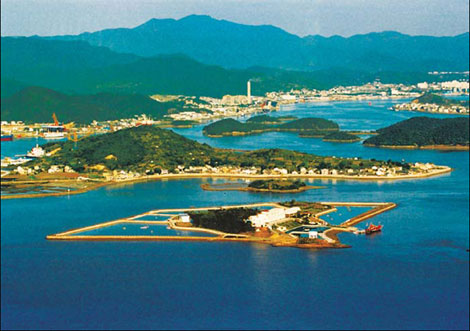Economy
Island getaway may be a costly dream
By Shi Yingying (China Daily)
Updated: 2011-04-27 07:32
 |
Large Medium Small |
Uninhabited havens up for lease but potential customers face wave of challenges in developing them, reports Shi Yingying in Zhoushan, Zhejiang province.
 |
|
Wuzhizhou Island Resort Center is one of the successful island developments in Sanya, Hainan province. It took more than 15 years and 200 million yuan for the developer to make it into a tourist attraction. [Provided to China Daily] |
Ni Dingkang opens Google Earth and browses 1,390 islands scattered around Zhoushan, the only prefecture-level city in China made up solely of islands. He locates the 10 chosen ones.
These are the uninhabited islands that Zhoushan is willing and ready to lease to private citizens and companies. They are among 176 unoccupied islands, off the coast of eight provinces, that have the potential to become private islands.
The policies governing leases of the islands are not complete. Local governments will not pay to equip the islands with fresh water, electricity, roads or docks. Those tasks fall to whoever qualifies for the lease. And whatever financial terms are reached, that is just the beginning of the spending cycle.
Since the State Oceanic Administration released the list of 176 islands on April 12, Ni has been busy fielding telephone calls and visits from eager investors. "No, you cannot buy the island and do whatever you want," he told one of them.
Ni works in the Maritime Space Office of the Zhoushan Ocean and Fisheries Bureau and is familiar with the islands. He is the one responsible for fielding the inquiries and looking for good potential renters. By "good" he means "the ones with long-term development plans and environmental concerns in mind", not just "those who only offer an attractive price".
It is much harder to locate the perfect candidate than he expected. Many of the potential investors are thinking along the lines of: "Can I connect the unoccupied island to the nearby big one and make it the dock for my shipyard in the future?"
"But they can't," Ni said, "because the functions of these 10 islands are fixed, or at least have fixed uses, such as for tourism, commercial fishing or public services.
"For example, five of them with better geographical locations, which means they're nearer the mainland, are going to become tourist resorts. Three of the relatively smaller ones, including two with areas less than 500 square meters, are going to become the bridge piers to reduce the local government's budget for building cross-sea bridges in the future.
"On top of that," he said, "they're not allowed to make serious alterations to the island's physical features."
Piles of paperwork
 |
|
A bird's-eye view of the small islands of Zhoushan, the only city in China that consists solely of islands. Ten of the unoccupied ones are available for lease. Provided to China Daily |
In addition to potential investors with "the wrong plan", Ni said, "most of the rest are scared off by the complicated application process".
China's Island Protection Law, which took effect in March 2010, says that individuals may use an uninhabited island for five to 50 years after obtaining approval from both the government and ecologists.
Ni gave some details for this region: "They have to prepare detailed island development plans for the next five years and other associated documents, and go through us (Zhoushan Ocean and Fisheries Bureau), Zhejiang Ocean and Fisheries Bureau, State Oceanic Administration and the State Council.
"Many investors gave up after I explained all of this to them."
In addition, Liu Zhigang, vice-director of Zhoushan Ocean and Fisheries Bureau, said, "So far there's no complete approval criteria even after they hand in the application. I was told it would come out by the end of the year at the earliest."
The first batch of uninhabited islands lists 176 off Zhejiang, Fujian, Hainan, Guangdong, Jiangsu, Shandong and Liaoning provinces as well as the Guangxi Zhuang autonomous region. There is no shortage of islands that could be available for future lists. This list names 31 from Zhejiang alone - 31 out of the province's 2,878 islands that measure 500 to 1,000 square meters. Ninety percent of them are unoccupied.
"Being the first batch means they are located relatively close to the mainland and are more suitable for reclamation," said an official with the Zhejiang ocean and fisheries bureau, who would not give her name. She said the 176 islands vary in size from more than 8 million square meters to less than 500. Most of them are about the size of a soccer field.
Calculations for the rent, she said, will take into account the island's size, the potential method for developing the land, its use and its distance from the mainland. Rent could run as high as 240,000 yuan a hectare a year (24 yuan a square meter a year) or as low as 14 yuan a hectare a year. That is a range of nearly $37,000 to slightly more than $2 per hectare annually.
| 分享按鈕 |



